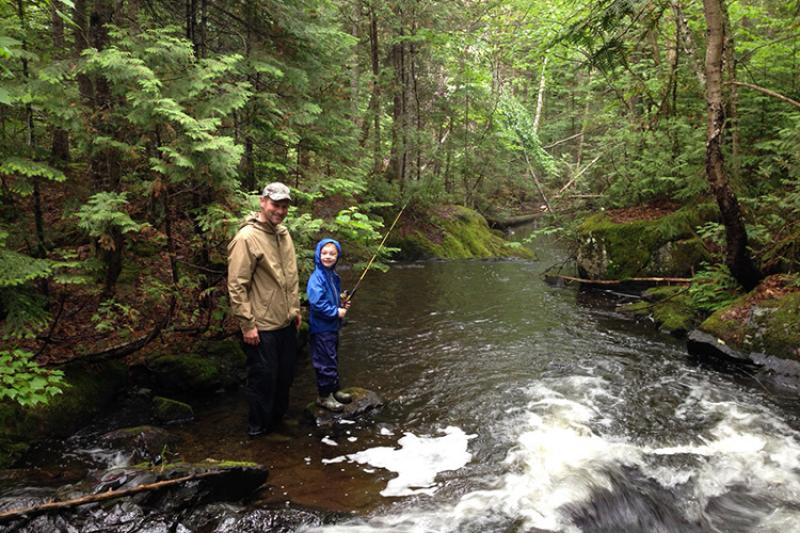Rory Saunders is a fishery biologist who works for NOAA Fisheries’ Northeast Salmon Team (NEST). This team is part of the Greater Atlantic Regional Fisheries Office and works cooperatively with the U.S. Fish and Wildlife Service, Maine Department of Marine Resources, and the Penobscot Nation to recover Atlantic salmon (one of NOAA Fisheries' Species in the Spotlight) populations and the ecosystem upon which they depend.
Currently, only naturally spawning Atlantic salmon are found in Maine. With fewer than 1,000 fish returning to Maine’s rivers every year, these populations are at a very high risk of extinction.
They are listed as endangered under the Endangered Species Act (ESA), which protects these fish wherever they occur, whether in rivers, estuaries, or the marine environment.
Decline of Atlantic Salmon
Historically, dams, overfishing, and pollution led to substantial declines in salmon abundance resulting in the closure of the commercial fishery in 1948. Improvements in water quality and stocking from hatcheries helped to rebuild populations to nearly 5,000 adults by 1985.
However, modest habitat improvements were offset by a reduction in marine survival that resulted in further population decline to a low of 628 adults in 2000 and even lower numbers in 2014. Thus, ongoing reliance on hatchery smolts (young Atlantic salmon) is essential, as hatcheries function as living gene banks by conserving the remnants of genetic diversity.
Greater Understanding of Salmon's Role in Ecosystem
Rory views his job as: “Helping managers ask questions that scientists can answer and helping scientists answer them in useful ways.” He adds, “An exciting change that I have seen since I came into the salmon program in 2002 is a greater awareness of the Atlantic salmon's role in the ecosystem. We are coming to understand that salmon recovery may only be possible if the other sea-run species like American shad, alewives, and rainbow smelt are secure and growing.”
This is because:
1) Salmon eat rainbow smelt and other sea-run species
2) Abundant runs of river herring and American shad likely reduce predation risks for migrating salmon
3) In-stream habitat is "cleaned up" or "conditioned" by sea lamprey spawning activity which makes the stream beds more productive for juvenile salmon and their prey
4) Nutrients deposited by spawning sea-run fish of all types make nursery habitats for salmon more productive
Still Abundant in Some Parts of Historic Range
Atlantic salmon are still abundant in some parts of their historic range, like the Teno River in Northern Finland, which supports commercial and recreational fisheries.

While some of these ideas remain untested hypotheses, the science is providing evidence that salmon are better off with the full complement of sea-run species in their habitats. Consequently, Rory’s and the Northeast Salmon Team’s work focuses not only on salmon, but on the full suite of native sea-run species (sea lamprey, river herring, and American shad). Unfortunately, many of these other native species are at or near all-time lows in abundance, much like salmon. So there is a lot of work to do.
Contact Us
If you have any questions, contact Rory at (207) 866-4049.



